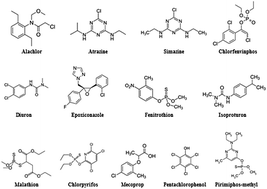A robust analytical method for the determination of pesticide residues in wastewater
Abstract
Much research has been carried out on the analysis of chemical residue pollutants in the aquatic environment including drinking water, lakes, rivers, ground water, estuaries and coastal zones. However, few studies report the analysis of wastewater for the presence of chemical pollutants, including pesticides, even though this is an important issue because wastewater can be a major point source input of pollutants to the environment. The aim of this research was to develop an analytical method for the detection and confirmation of 13 pesticide residues in wastewater. All 13 pesticides are included on the EU priority pesticides list outlined the Water Framework Directive (2000/60/EC). Pesticides were extracted from wastewater using solid-phase extraction (SPE) on polymeric cartridges containing hydrophilic and lipophilic functional groups capable of retaining pesticides with diverse physico-chemical properties. The pesticides were eluted with organic solvent and concentrated by evaporation prior to analysis by liquid-chromatography coupled to tandem mass spectrometry (LC-MS/MS) operated in electrospray ionization (ESI) mode. LC-MS/MS runs both positive and negative modes were carried out for each sample. Recovery of the 13 pesticides was typically greater than 80%. All 13 pesticides were found to be linear over the concentration range 1 to 100 ng mL−1 with linear regression values (R2) typically greater than 0.99. The limit of detection (LOD) of the method was 1 ng mL−1, except for chlorpyrifos (5 ng mL−1). 11 isotopically labelled internal standards were included in the method to improve accuracy and precision. The final method was used to analyse wastewater samples collected from seven WWTPs over a period of four months. Several pesticides were found to be present in the samples tested at each WWTP. A total of 204 samples were collected from 68 sampling events between 2011 and 2012. Exceedances were detected at each of the seven sites in this study, with diuron, atrazine and simazine most frequently occurring.

- This article is part of the themed collection: Celebrating Excellence in Research: 100 Women of Chemistry


 Please wait while we load your content...
Please wait while we load your content...